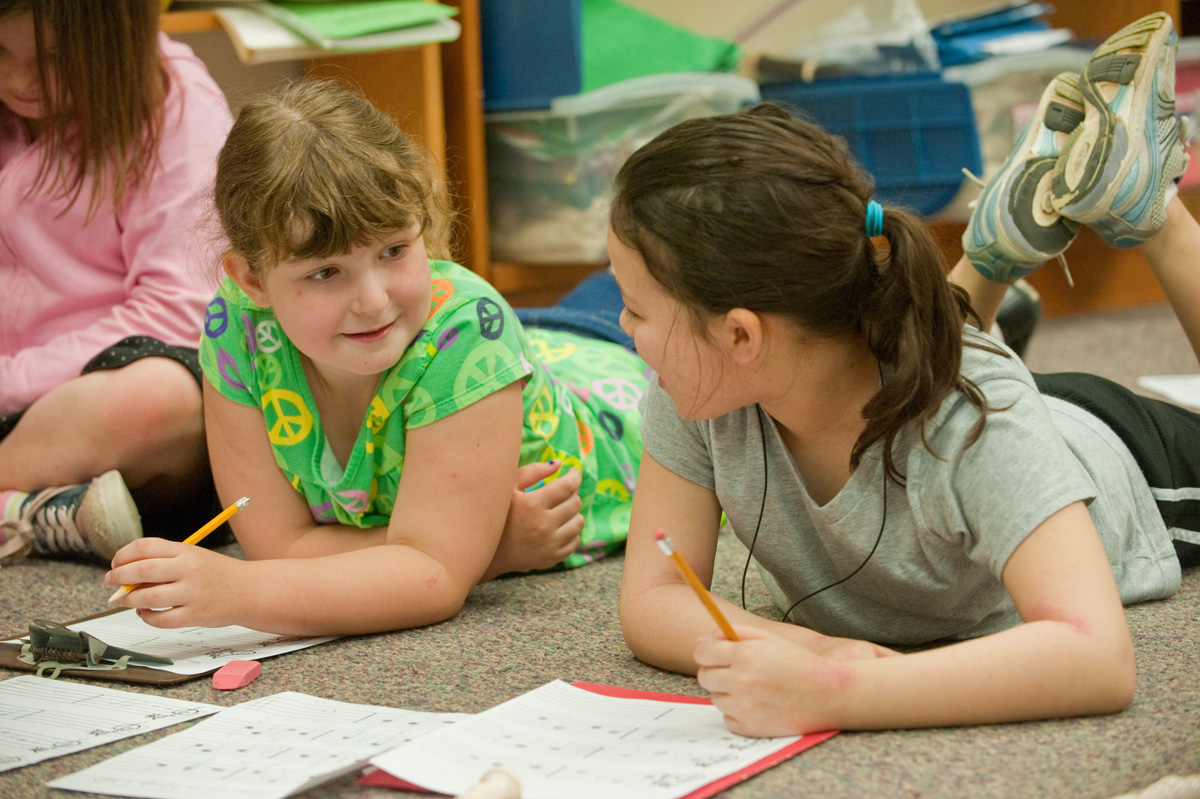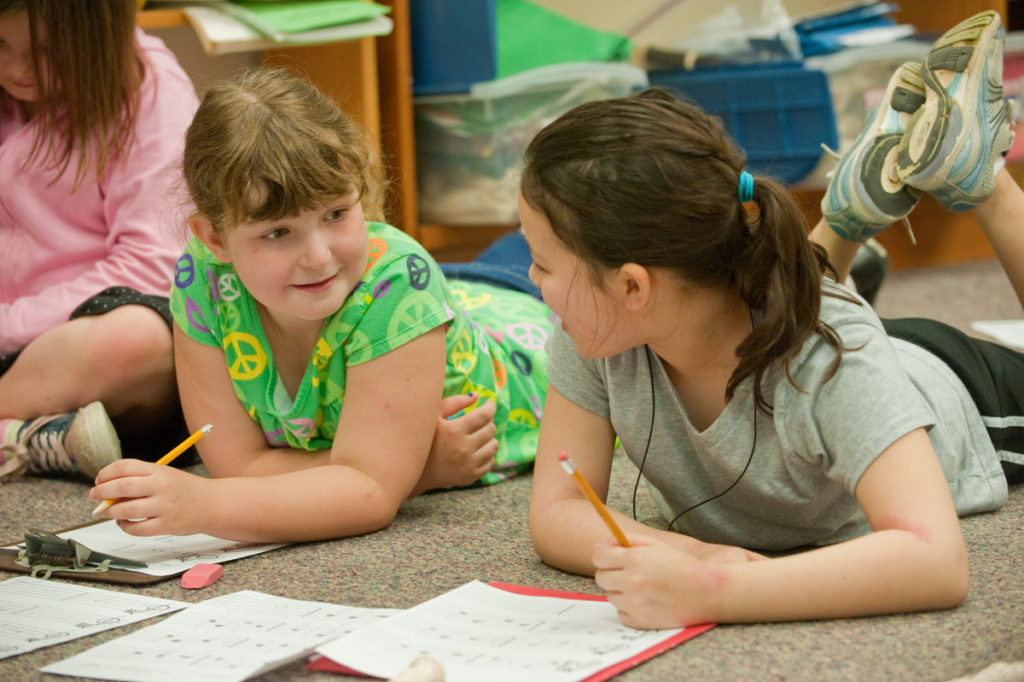What Do Insects Do All Day?

 Four classes of second graders have just begun a new science unit on insects at the University School of Nashville in Tennessee. I and the other three second-grade teachers have each invited our classes to share what they know about insects and what they would like to learn. To our delight, the children are bubbling over with comments and questions.
Four classes of second graders have just begun a new science unit on insects at the University School of Nashville in Tennessee. I and the other three second-grade teachers have each invited our classes to share what they know about insects and what they would like to learn. To our delight, the children are bubbling over with comments and questions.
They excitedly share their knowledge: “Flies have big, bulging eyes,” someone declares. “When a bee stings, it dies,” says another student.
The children share their questions, too. “How many bees live in a hive?” asks one child. “What do insects do all day?” wonders another. Starting new units by helping children explore their knowledge and interests is a technique many teachers use. For the insect unit, we decided to do this by using an Academic Choice activity. A Responsive Classroom strategy, Academic Choice is a way of structuring lessons to give children choices in how they’ll meet defined learning goals. Having choices gives children a way to connect learning to their personal interests and learning styles. Using Academic Choice to structure our introductory insect lesson really paid off for our second graders. This is how it worked.
Careful lesson planning
As a team, we planned the lesson with the straightforward learning goal of having children accurately reflect about and demonstrate what they already knew about insects. We had a secondary goal of inspiring enthusiasm and curiosity, but we decided to share only the first goal with the students.
In deciding what choices the children would have for demonstrating their insect knowledge, we brainstormed about materials that our classes previously enjoyed and used successfully. How could they use those materials to show information about insects? We decided to give them the choices of writing, drawing with colored pencils, using pattern blocks, doing cut-and-paste pictures, or using modeling clay.
We wanted the students to be ready to share verbally what they knew about insects on that introductory day, while their minds were still busy with the topic. Most of their work, therefore, would occur in one long session-about forty-five minutes. We would give the children a relatively short planning option: They would simply think for a few minutes about which medium they would like to use to show their knowledge and then sign up on a choice board.
As for the reflection phase of this lesson, we wanted the whole class, not just a few students, to share their insect knowledge. To allow that to happen, we decided to invite all the children to present their work during periods spread throughout the day. As the children shared their morning’s work, they would choose one or two facts to add to our class list of what we knew about insects. Then, the next day, we would brainstorm what we still wanted to find out.
Teaching the lesson
As we put our plans into action, all four of us were happy to see that Academic Choice was indeed helping the children learn. They worked hard, asked insightful questions, and were clearly excited about beginning the new science unit.
In my classroom, students very quickly got to work after choosing their medium. As the students worked, they shared ideas with friends. A busy hum arose in the room. Many children were impressed with unusual facts their classmates casually shared. For instance, Maggie, who chose to write about flies, told friends that flies turn their food into “goo” and then slurp it. Alden delighted in his clay models of a wasp hanging out in a tree and a smaller insect on the ground. He used the models to show other children how certain wasps paralyze their prey and then eat the creatures while they’re down.
In addition to sharing their knowledge as they worked, the children also questioned each other’s facts and sometimes their own. Joshua used pattern blocks to show what he knew about dragonflies-he built the nymph as having six legs and the adult as having four. But as he did so, he began to doubt whether the four-legs fact was true. This self-questioning is a step toward rich learning.
The children became so involved in their projects that most needed the whole forty-five minutes to finish. Those who did finish a few minutes early were excited to begin exploring some of the insect books in our room.
Although the goal of the lesson was more to get students thinking than to have them produce a beautiful end product, they did create some elaborate pieces. Elizabeth, for example, drew with careful detail a series of insects and wrote several facts about each. Her ladybug had a speech bubble that said, “I’m a ladybug. I am an insect. I only fly when it’s warm, and I have six legs!”
Reflection phase spurs further interest
The children’s enthusiasm increased as they shared their projects with the group and chose which of their facts to add to our list. Our finished list was a long one. As the children surveyed it, some began to doubt whether their facts were correct, just as Joshua had done earlier.
I made a mental note for myself that the finished list contained many misconceptions. One child, for example, offered that “Wasps eat butterflies which eat gnats which eat ladybugs which eat aphids which eat mosquitoes.” The list gave me a clear idea of what the children already knew about insects and what they still needed to understand.
As we finished our list of what we knew (or thought we knew), many children were already asking when they could choose an insect and begin their research projects. I overheard excited conversations about insects throughout the day. Many children took a break from their afternoon independent reading book to read some of our insect books. Joshua wanted to see if dragonfly adults had six legs or four and eagerly reported his findings at the end of independent reading time (they have six).
What students want to learn
The next day, we gathered to discuss what we now wanted to learn about insects. The children had many questions. “How long do insects live?” they wanted to know. “Are there mixed-breed insects? Do wasps’ stingers fall off when they sting? How and why do bees and wasps sting?” They had so many questions that I could hardly call on each of them fast enough.
As the unit progressed, students wanted to add questions to our “What we want to learn about” list. Then, when they discovered answers to some of their classmates’ questions through their individual research projects, they enthusiastically shared their new knowledge.
Several children also delighted in discovering that some “facts” on our “What we know” list were incorrect. And before we ended the unit, the children wanted to make sure that we answered all the questions no one had yet addressed.
Good teaching and good learning
This Academic Choice lesson accomplished two important things: First, it sparked excitement and curiosity that inspired the children’s learning throughout the insect unit. Second, it guided the teachers by telling us what the children knew and what they still wanted or needed to know. In all four of our classrooms, this meant good teaching and good learning.
What Is Academic Choice?
Academic Choice is a strategy for structuring many kinds of lessons and activities. In Academic Choice lessons, students engage in a cycle of planning, working, and reflecting and have choices of what and/or how they learn or practice.
The combination of this learning cycle and the element of choice maximizes students’ learning and their engagement with learning. The strategy:
- Supports students’ intrinsic motivation to learn
- Gives students opportunities to appreciate each other’s good ideas and learn from each other
- Addresses a range of skill levels, strengths, and interests
When Can I Use Academic Choice?
Teachers can use Academic Choice to structure a wide range of lessons:
- Practice basic skills such as math facts or literacy skills
- Practice fluency and decoding
- Practice genres of writing
- Research and study a science, history, or social studies topic
- Look deeper into math concepts, such as geometry or fractions
- Show an understanding or mastery of any curriculum standard
For more information about Academic Choice—and other strategies for increasing students’ engagement in learning—see The Joyful Classroom: Practical Ways to Engage and Challenge Students K–6 (CRS, 2016).
Margaret Berry teaches second graders at the University School of Nashville in Tennessee, along with colleagues Molly Darr, Katherine Pitt, and Kate McGowan. She has been teaching second grade for eight years and previously taught first grade for four years.
Tags: Academic Choice, Engaging Academics, Science